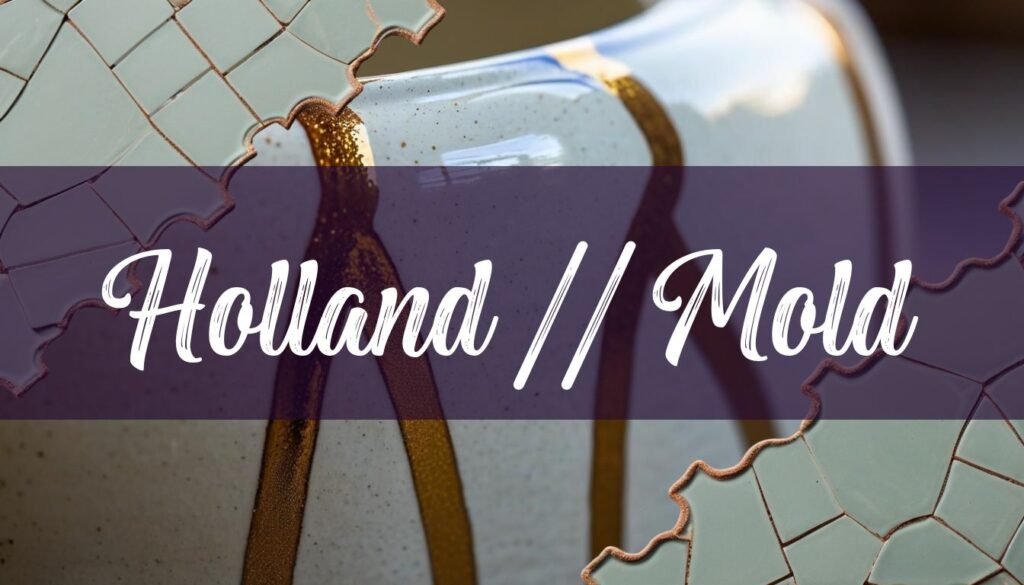Holland Mold pottery represents a unique chapter in the history of American ceramics, characterized by its accessibility and the personal touch imbued by hobbyist crafters. Originating in the mid-20th century, Holland Mold pieces are not just collectibles; they are tangible connections to a time when ceramics was a popular and accessible art form for home enthusiasts. Understanding the story behind Holland Mold, its distinctive features, and how to identify authentic pieces is key to appreciating and collecting these vintage treasures.
What is Holland Mold Pottery?
Holland Mold pottery refers to ceramic items created using molds produced by Holland Mold Inc., a company founded in 1946 by Frank Hollendonner. An Austrian immigrant with expertise in mold making, Hollendonner established his business in Trenton, New Jersey, a hub of ceramic production in the United States. Unlike traditional potteries that manufactured and sold finished ceramic products, Holland Mold Inc. specialized in creating molds for hobbyists. These molds enabled individuals to create their own ceramic pieces at home, fostering a wave of do-it-yourself ceramics that swept through mid-century America. The company’s molds were used to produce a wide array of items, from figurines and vases to planters and holiday decorations, reflecting the diverse tastes and creative aspirations of home crafters. The resulting pottery is diverse in quality and style, often reflecting the skill and artistic preferences of the individual who crafted the piece.
For more information about the company, you can read the story of Holland Mold.
You can also read this summary about the history of Holland Molds.
History and Origins
The story of Holland Mold begins with Frank Hollendonner, who honed his mold-making skills at a tile company in Austria. Upon immigrating to the United States, he settled in Trenton, New Jersey, where he quickly found work in the ceramics industry. Recognizing an opportunity, Hollendonner, along with his brother Rudy, started Holland Mold Inc. in a four-car garage. The company’s success led to expansion, requiring Hollendonner to mortgage his home and secure additional funding to move the operation to a larger facility. For over five decades, Holland Mold flourished under three generations of the Hollendonner family, becoming a prominent name in the ceramics hobbyist community. In 1997, the family made the decision to retire and sold the company’s assets. Despite the company’s closure, its legacy lives on through the countless ceramic pieces created using Holland Mold molds, many of which are now sought after by collectors. It’s worth noting that while Holland Mold primarily catered to hobbyists, some of their designs were adopted by larger potteries for mass production, further extending their influence on the ceramics landscape. You can read more on the history of pottery as a cultural identity preserved here.
More information on the story can be read about at Francines Figurines.
Another source that also shares the history of Holland Mold, Inc., can be read here.
A further read on the history of the company is available here.
Identifying and Collecting Holland Mold Pottery
Identifying authentic Holland Mold pottery requires an understanding of the company’s history and the characteristics of the molds they produced. Since Holland Mold Inc. primarily created molds and not finished products, the mark on a piece indicates the mold’s origin rather than the manufacturer of the final ceramic item. Pieces made using Holland Molds often bear the “Holland Mold” mark, but the quality and style can vary significantly depending on the skill of the hobbyist who created the piece. When assessing the value and collectibility of Holland Mold pottery, several factors come into play. Rarity, condition, and the intricacy of the design all influence the price. Pieces that are well-preserved and feature unique or elaborate designs tend to be more valuable. Additionally, items with a clear “Holland Mold” mark can be more desirable to collectors, as this confirms the mold’s origin. Collecting Holland Mold pottery offers a glimpse into the world of mid-century ceramics and the creative spirit of home crafters. These pieces are not only decorative but also represent a unique intersection of industrial production and individual artistry.
More details about identifying authentic pottery can be found here. Interested in collecting more? You can read about what ceramics are valuable here.
When assessing the value and collectibility of Holland Mold pottery, several factors come into play. You can read more about rarity, condition, and the intricacy of the design all influence the price here.





